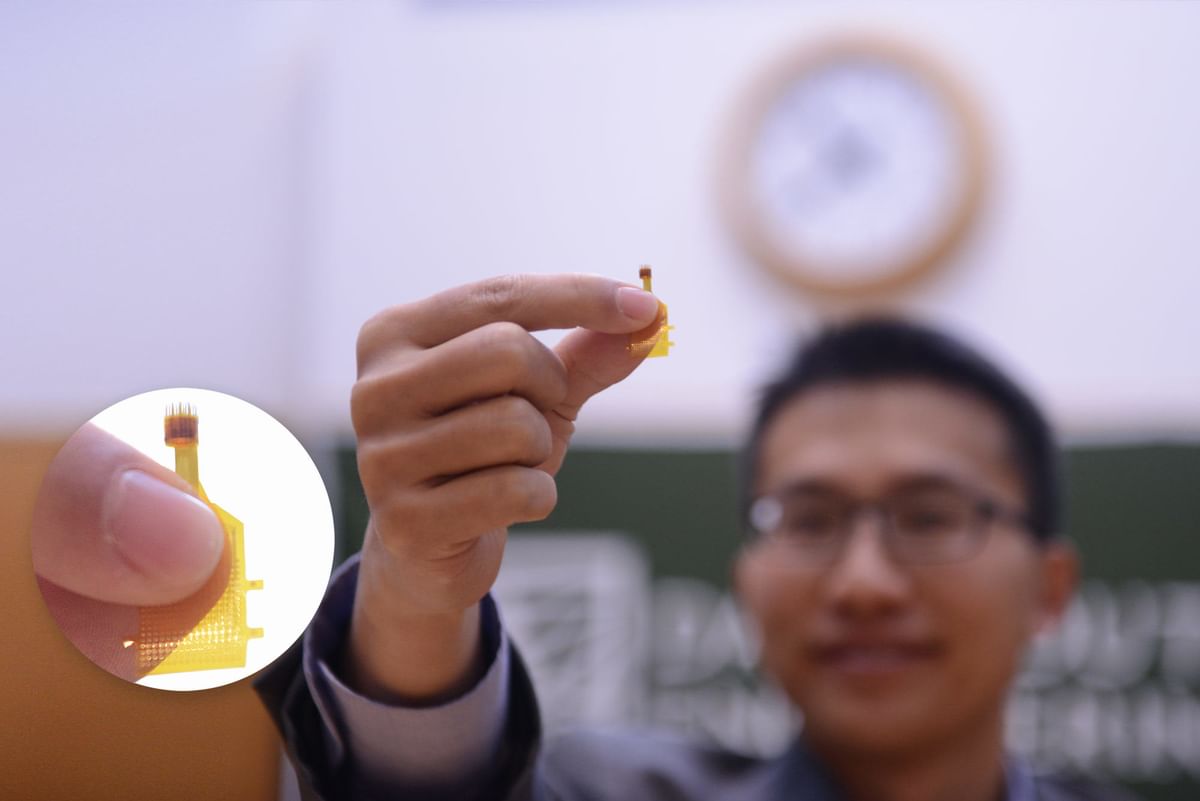- Undergraduate
Bachelor's Degrees
Bachelor of ArtsBachelor of EngineeringDual-Degree ProgramUndergraduate AdmissionsUndergraduate Experience
- Graduate
Graduate Experience
- Research
- Entrepreneurship
- Community
- About
-
Search
All Thayer News

Dartmouth to Co-lead $2.8M NIH Grant to Develop NeuroCROWN, a Next-Gen Implantable Neurotechnology
Jan 06, 2022 | by Julie Bonette
Dartmouth Engineering professor Hui Fang will co-lead a $2.8 million, four-year grant awarded by the National Institutes of Health (NIH) to develop next-generation soft electronic neural probes as a multi-Principal Investigator (MPI).

Professor Fang holds a 3D soft neural probe. (Photo by Kathryn Lapierre)
The project, "Neuro-CROWN: Optimized Ultra-Flexible CMOS Electrode Arrays for 3D, Low-Noise Neural Interfaces," is part of NIH's The BRAIN Initiative aimed at revolutionizing our understanding of the human brain. In collaboration with biomedical engineering professor Jonathan Viventi (PI) at Duke University, this project will develop and disseminate high-density, flexible electrode arrays with thousands of low-noise, multiplexed electrodes.
Traditionally, when researchers study brain activity or neurological disorders, they use electrodes that are individually wired to a separate, remote recording device. The sheer amount of wiring in a constrained space means that researchers can only use about 100 electrodes, so they're often required to choose between obtaining a high-resolution reading that focuses on a small area of the brain or collecting low-resolution readings over a large area of the brain.
This project will help sidestep this limitation by developing flexible CMOS electrode arrays that require a fraction of the wiring and dramatically increase the number of electrodes available for use. The reduction in wires will enable dramatic increases in the performance of next-generation neural interfaces for research and clinical use, including long-term experiments to study the behavior of freely behaving animals including humans.
While prior electrode arrays were flat, 2D shapes placed over the brain, Fang's team also developed an entirely new strategy to achieve the much-needed 3D interfacing capability.
"What my lab has also achieved is a unique way to transform flexible devices from planar form — the dominant form of all electronics — to 3D architecture. It is realized through a rather simple process, taking advantage of the device's flexibility."
Professor Hui Fang
This new array, dubbed the Neuro-CROWN (CMOS-based, rollable, low-noise neuroelectronics), could house more than 2,000 electrodes spread three-dimensionally and use fewer than 20 external wire connections. The team believes this new technology will enable novel fundamental neuroscience research and next-generation neuroprosthetic systems.
Along with Fang, several postdoctorates and students at Dartmouth will be involved in the project.
For contacts and other media information visit our Media Resources page.
